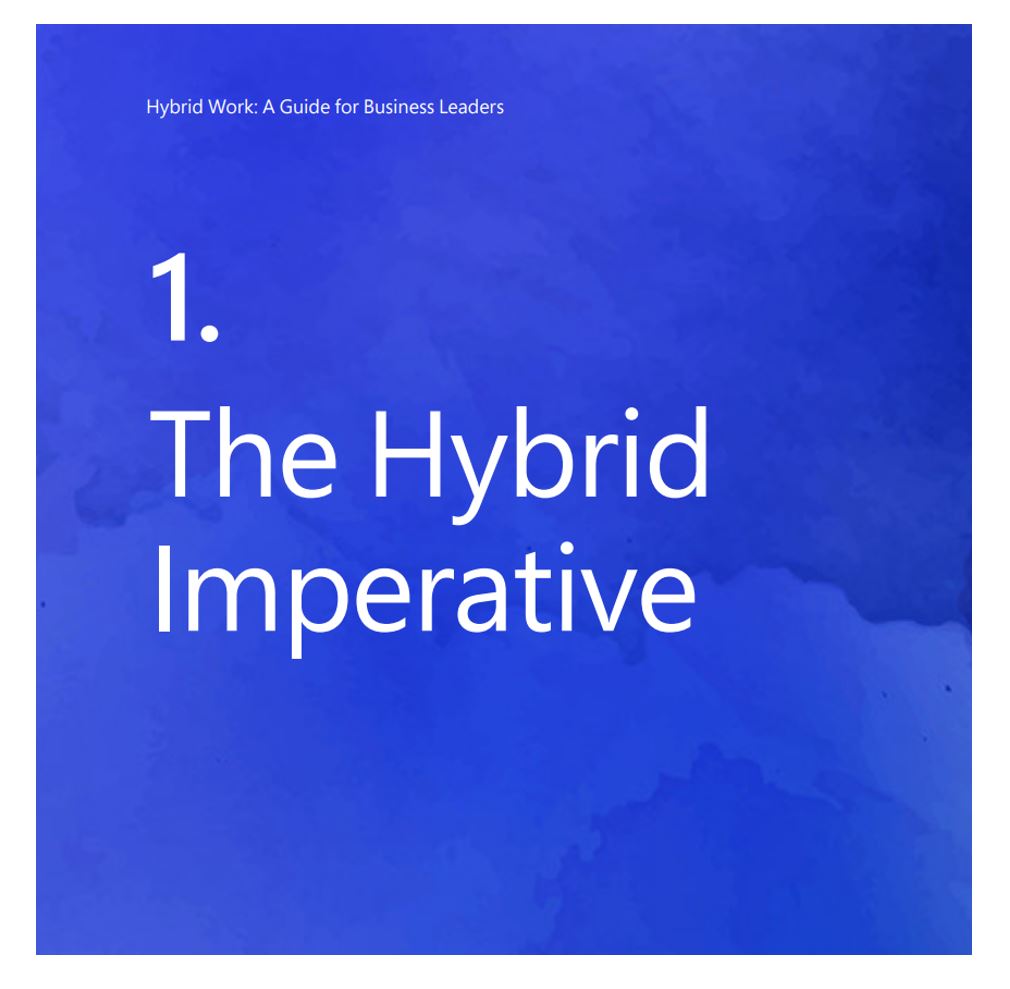
May 21, 2020
Uncovering resilience: Measuring organizational networks during crisis
Editor’s Note: COVID-19 has impacted people around the world, challenging us to adapt to travel restrictions, school closures, and the removal of barriers between work and life—all at once. So, what does a cross-functional team of engineers, data scientists, analysts, and marketers that lives in the space between workplace culture and data do when presented with the world’s largest work-from-home shift? It, well, does its homework. In this blog series, we’ll share real-time learnings as we measure the impact of this unprecedented shift on how one group of employees works, connects, and balances our lives. We hope these insights will teach us something about how work is changing and help us all get through this, together.
Resilient organizations not only weather crises: they emerge stronger. So there’s good reason, the word “resilience” is trending today. But can organizations measure resiliency and actively manage it, all while in the midst of disruption? In our current situation, when leaders must focus on immediate tactical responses and also think ahead about re-defining the future of work, that question felt worth a very deep dive.
What follows is the first in a multi-part look into how we can gain actionable insights to strengthen resilience through Organizational Network Analysis (“ONA”). ONA concentrates on the pattern of connections—the organizational networks—formed when employees collaborate through meetings, emails, instant messages, and calls. Traditional measures of organizational resilience such as financials and employee retention emphasize outcomes and cannot be managed in real time. Conversely, ONA makes behaviors associated with resilience immediately and dynamically visible across an organization. It gives us data-driven information about how to course-correct even in the midst of crisis and prepare for future shocks.
Here, we focused on the concept of “adaptivity,” a key trait of resilient organizations. We partnered with a specialized team in Microsoft Research that merges artificial intelligence with business intelligence to create an organizational network from the 1.87 million person-to-person connections shared by over 90,000 de-identified Microsoft employees. We examined if, and how, relationships changed, to understand the ways employees adapted their organizational networks in response to working remotely. We then contextualized the changes we saw with anonymous survey responses to see what some of our colleagues were experiencing. We did this analysis to gain visibility into the different strategies employees use when faced with crisis, and to learn how these adaptive strategies might nurture organizational resilience.
Stability after shock?
One way to assess networks is by looking at churn—the amount of relationships lost from one month to the next. We know threats tend to draw those within a group closer together and compel people to rely on their established relationships. But could we effectively maintain our connections in a world where so much, including how and where we communicate and collaborate, has changed?
Finding: Networks remained stable after the shift.
Despite an unprecedented shift in the way we work, employees actually experienced less churn in our networks than in normal months. In other words, a great proportion of the specific connections we had before the shift (62 percent) remained intact after the switch to remote work. This reflects more network stability than in the month prior to the current situation.
The power of ONA lies in its ability to quantify and make visible changes in an organization that are otherwise hard to see. The figure below illustrates the organizational network of Microsoft’s US-based employees. Each dot represents a single employee, and clumps represent groups that collaborate frequently. In this story we’re focused on the color—employees represented by blue dots experienced less churn in their networks than in normal months. This wide swath of limited churn indicates a strong sense of stability in the organization at large.
Overcoming crisis situations is impossible if the organization is instable or rigid. Resilient organizations must be able to withstand shocks, and flexible enough to navigate through. In Microsoft, we kept business moving forward by maintaining stability at levels consistent with ‘normal’ times —our first indicator of resilience in the face of crisis.


Leaning on technology
We were pleasantly surprised by these results. Considering the many reasons staying connected could have proved more difficult—less time, more distractions, mismatched schedules—experiencing more stability than in normal times surprised us. But how were we able to maintain relationships when we lost so many traditional ways of collaborating? We found our answer in the new ways we’re using technology.
By looking at how different groups use digital collaboration (e.g. email, meetings, instant messaging, and calls) before vs. after the shift, we can differentiate groups of employees whose collaboration modes remained largely stable from those who adopted new ways of staying connected. The figure below provides that summary.
Finding: Employees whose networks were most at risk from the loss of physical workspace adapted their modes of collaboration to maintain connections.
The yellow-orange portion of the chart represents employees whose collaboration modes changed the most. Employees in the green-blue portion didn’t exhibit much change in how they collaborated. Interestingly, employee function aligned almost perfectly to the same axis. Sales and Consulting roles are almost all in the green-blue section, whereas all other roles are in the yellow-orange section.
Since we know Sales and Consulting roles were largely working remotely before the shift, we have strong evidence that employees who were most at risk of a shock to their networks—those who lost the physical contact with colleagues they were used to working near—adapted their methods of collaboration to retain network stability. In other words, they exhibited flexibility in how they worked, which is another critical component of resiliency.
I have replaced my weekly networking and coffee catch-ups on campus with virtual catch-ups, mostly 1:1. I seek to stay in touch, check-in on how people are doing, exchange experiences. I like to relate on a human level and seek to truly connect beyond work itself.
I found that there were a couple of people with whom I interacted face-to-face extensively, and so I had to reach out to them.
When instability indicates organizational resilience
Thus far we have concentrated on the groups whose members retained their existing connections. But we were curious about the orange island in the middle of Figure 1. Employees in this island displayed a connectivity profile that seemed nearly opposite to the rest of the organization; their networks experienced significant churn.
Finding: Employees focused on Microsoft’s crisis response exhibited drastically different network responses than their peers.
Deeper analysis revealed that these were the only working groups in which employees collaborated with fewer people during the remote-work disruption than before it. They did so principally by maintaining fewer of their existing connections (a drop of 12 percent), with most lost connections coming from inside their own working group. They did add some new connections, 42 percent of which were from other working groups.
What happened here? This group includes members of Microsoft’s Strategy and Operations organization. These are the people managing the organization’s “control center” through the crisis. Members of this critical group nimbly adapted their networks to current needs by paring down connections, likely to only those most acutely relevant to regaining stability for the organization and its employees.
As we mentioned earlier, for resilient organizations, navigating through crises requires flexibility We see this flexibility demonstrated most by the group charged with steering the organization through the current crisis. Were this group to remain rigidly focused on the same ways of working prior to the shift or to be slow in their reaction to it, the organization would be weakened and less able to continue to weather changes. Its adaptivity offers a positive indicator of resilience.
Seeking new connections
We started by sharing findings about network churn, highlighting the fact that employees were remarkably adept at maintaining their pre-crisis relationships. The story gets more interesting.
Finding: Overall, networks grew and diversified.
In addition to retaining their existing ties, Microsoft employees increased the total number of people in their networks—by nearly 14 percent. In other words, they didn’t lose as many connections as we’d expect, and added a lot of new ones at the same time. Furthermore, of all new connections, an average of 30 percent were to employees in other working groups.
This was surprising. That members of most groups formed so many new connections, and that many of those new connections reached beyond normal working groups, runs opposite to expectations. Our response system often leads us to freeze when faced with “threats.” In the realm of networks, we would expect employees to focus on what they’ve always done and connect mainly with those they find familiar.
The cliques of physical cohorts are easier to collaborate with and people are more accessible when everyone works remote. My network has grown implicitly.
[I’m] trying to maintain some of my less strong network ties, with people I’d normally see during [my] quarterly visits to [headquarters].
We believe this cross-group connectivity enables information-sharing, which is essential for organizational resilience. Even while company leaders share information with the workforce frequently, there remains great uncertainty in this unknown situation. To gain a sense of control, people are reaching out to access “new” information. Finally, through connections that cross working groups, employees can learn how others view the organization, ultimately leading to a broader shared understanding of the company.
Measuring and nurturing organizational resilience as change continues
Like all other organizations, Microsoft faces a long, unchartered path forward. We moved first toward continuity to maintain stability and now toward rebuilding, all the while fortifying for long-term resilience. Our post here describes just the initial shift from the ‘old normal’ to the ‘new normal,’ through the lens of organizational network analysis. While it’s an early look into how the organization changed, we learned that most employees matured their networks by retaining existing connections while adding new ones that spanned working-group boundaries. We learned that technology-enabled behavioral change played an important role in maintaining networks. And we found our ‘control center’ quickly pivoted its networks to address current needs.
These patterns suggest that groups respond differently to crises and should receive differential support from organizations over time. Control tower groups (strategy and operations, primarily) face critical impacts of business disruption on operations. They must manage novel problems requiring cross-disciplinary input, including the transition to remote work, while the importance of their work requires putting aside all non-essential communication. In other words, adaptivity doesn’t mean just changing behaviors in a single direction; it means the ability to pivot to meet new demands.
Overall, for organizations to be resilient, they need not predict or swerve to avoid the next crisis. They must have the flexibility, through capacity, empowered employees, and connectivity, to adapt and emerge stronger from it.
Research Lead: Kevin Sherman
Series Editor: Natalie Singer-Velush
Explore a deeper look at the research in our paper, “Toward resilience: Adapting to crisis through the lens of organizational networks.”








